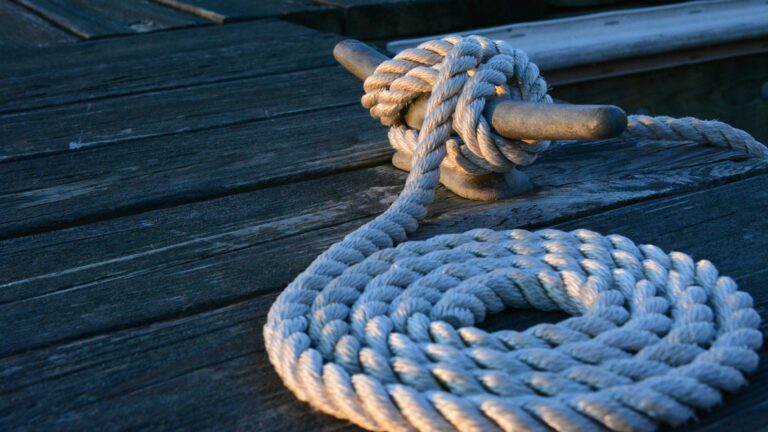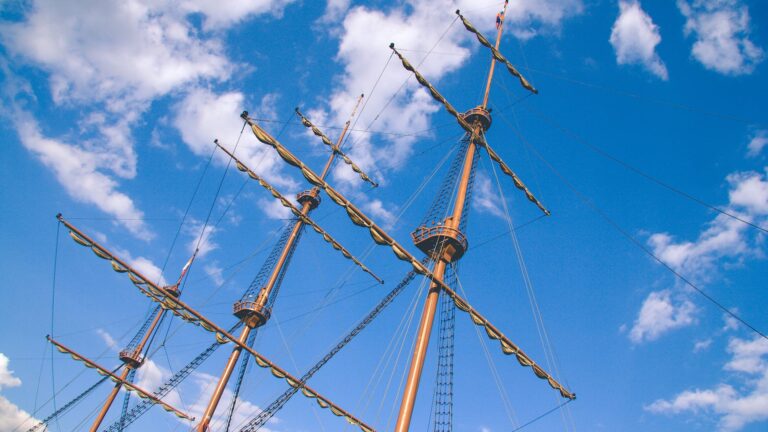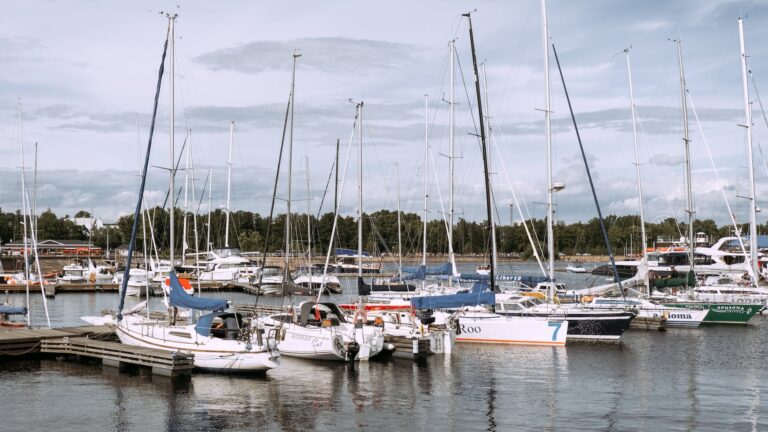How Windy Is Too Windy For Sailing?
From the amateur sailor getting their feet wet to experienced skippers across the globe, a common question asked is “how windy is too windy for sailing?” Every boat, crew and sailor has a different threshold for what constitutes “windy” conditions, but there are a few general guidelines that can be used to help decide if the conditions are suitable for sailing or if it’s time to head back to port and wait out the stronger gusts and choppy waves.
What is “too windy” for sailing?
In general, anything with wind speeds above 15 knots is considered too windy to sail in safely, though this will depend on the type of boat and experience level of the crew aboard.
It’s important to note that even though 15 knots may feel like a light breeze on land, at sea it can create dangerous conditions with large waves, powerful gusts and a high risk of capsizing or swamping a boat.
Therefore, most sailors should err on the side of caution when assessing their own comfort level when it comes to determining how windy is too windy for their boat and crew size/experience level.
Risk Factors of Sailing in Windy Conditions
Sailing in strong winds can be both dangerous and exhilarating, but there are several key risk factors that should be taken into consideration before heading out on the water:
- Waves become larger as the wind speed increases
- Increased risk of capsizing or swamping due to increased wave size and power of gusts
- Increased stress on sails, rigging and other components which could lead to equipment failure
- Difficulty maneuvering/controlling boat without proper technique/experience
- Reduced visibility due to spray/spray kicked up by waves
- Risk of injury from being thrown around by waves or equipment failure
- Increased risk of collision due to lack of visibility and difficulty maneuvering
- Reduced effectiveness of safety equipment such as life jackets/life rafts due to choppy waters
Light Winds (Below 5 Knots)
Light winds (below 5 knots) often present an opportunity for novice sailors as they provide a good learning environment with minimal risk or danger from crashing waves or powerful gusts. - However, at this speed maneuvering and powering a boat with sails may become difficult as there isn’t enough power behind them to move the boat efficiently through the water – but this can be seen as an opportunity to learn how sails work and how they interact with different levels of wind! Overall, light winds may not provide much excitement but they are usually safe enough for even novice sailors who are just getting started in the sport.
Moderate Winds (5-12 Knots)
Moderate winds (5-12 knots) generally provide ideal sailing conditions, providing enough power behind the sails while still allowing experienced skippers some control over their vessel via adjustments made with sail trim & technique without risking capsize or equipment damage from excessive heeling & wave action.
This range also offers some good learning opportunities as more advanced maneuvers such as tacking & gybing become possible while still being relatively safe compared to higher speeds – making it ideal for more experienced sailors who want some challenge without risking too much danger!
Heavy Winds (Over 12 Knots)
Heavy winds (over 12 knots aboard particular boats such as dinghies & catamarans) require more caution than lighter speeds due to increased wave action & power behind gusts which can cause excessive heeling & instability when combined with improper sail trim & technique – meaning inexperienced sailors should avoid these conditions until they’ve gained more experience under calmer waters first! However, experienced skippers can still enjoy these speeds if they’re prepared, reducing sail area & depowering them appropriately so that they don’t heel excessively while still providing enough thrust from gusts & wave action to propel them through the water efficiently!
Heeling in Heavy Winds
When sailing in heavy winds aboard dinghies & catamarans it’s important to keep an eye out for excessive heeling which can indicate that you’re carrying too much sail area relative to your current speed – leading you downwind faster than expected which can cause instability & put you at risk of capsizing if not corrected quickly! The best way to avoid this is by reducing your sail area appropriately so that it matches your current speed while still providing enough thrust from gusts & wave action so that you don’t lose momentum – allowing you stay upright & make efficient progress through the water safely!
Reducing Sail Area For Heavy Winds
If you do find yourself heeling excessively in heavy winds then reducing your sail area will help reduce drag & therefore increase stability, allowing you stay upright while still making efficient progress through the water safely! This can be done by simply furling away excess mainsail or jib area until your vessel becomes stable again – but remember that this will reduce your thrust so make sure you keep an eye out for any lulls where you may need additional power from your sails otherwise you’ll lose momentum quickly! Also remember that any changes made should be done gradually so as not too disrupt your vessel’s balance suddenly which could lead to capsizing!
Safety Precautions For Sailing In Strong Winds
When sailing in strong winds it’s important that everyone aboard takes proper safety precautions, wearing life jackets at all times along with tether lines attached securely between each person onboard – this will help ensure everyone remains connected together even if someone were swept overboard unexpectedly! It’s also important not forget about other safety equipment such as flares & EPIRB’s, ensuring these are kept close-by so they’re easily accessible when needed – especially if you’re heading offshore where help may take longer reach you than usual!
Benefits Of Sailing In Strong Winds
Despite all the dangers associated with strong winds there are also many benefits, providing experienced skippers with an opportunity to test their skills against nature while enjoying exhilarating rides across open waters with minimal effort required from sails thanks to powerful gusts pushing them along effortlessly! This also allows crews onboard boats such as dinghies or catamarans an opportunity practice advanced maneuvers such as tacking/gybing against stronger forces which will help refine their skills before attempting them under calmer conditions – making strong wind days an excellent learning opportunity especially when combined with appropriate safety precautions taken beforehand!
Conclusion
In conclusion, how windy is too windy depends on many factors such as type of boat, experience level of crew onboard and personal preference, however anything above 15 knots should generally be avoided unless all necessary safety precautions have been taken beforehand by both crew members and skipper alike – after all it’s always better safe than sorry when dealing with Mother Nature herself! So whether your goal is just learning or pushing yourself against nature’s forces, always bear these tips in mind before heading out onto open waters whatever weather she throws your way!







